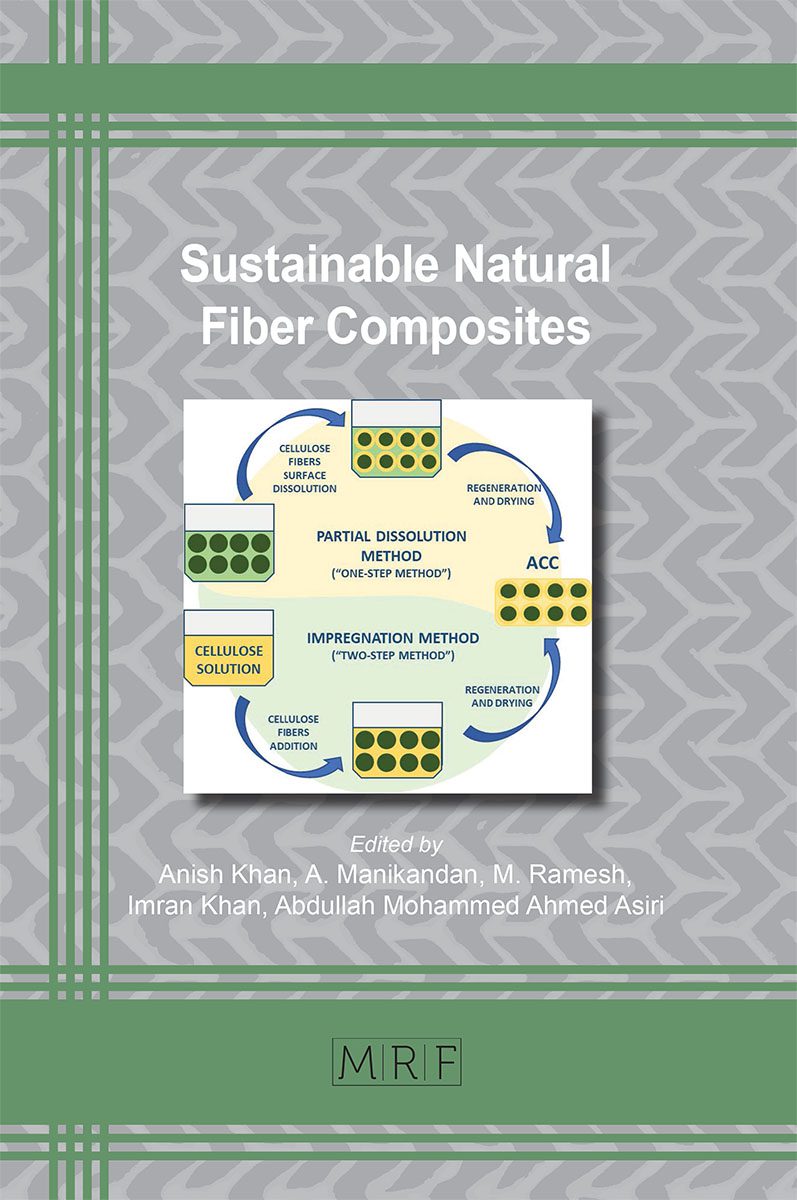Microstructure Characteristics of Cellulose Fibers in Cement Paste and Concrete – A Review
Syed Habibunnisa, Ruben Nerella and Madduru Sri Rama Chand
This paper explores, present scenario of using natural fibers in concrete, which are having high cellulose content. Cellulose fibers contribute the development of high-quality fiber-reinforced cement composites. In recent days natural fibers attracting many researchers due to its low cost and being largely available in nature with the comparison of artificial fibers. These are accessible in the fibrous formation and extracted from seed pods, herbal leaves, which are become trustful over the regular fibers. Sometimes construction industries also use natural plant cellulose fibers as a secondary raw material. These seem to be a good alternative resource for eco-friendly materials that can be replace the synthetic polymeric fibers. The author aim is to discuss the microstructure of concrete reinforced with cellulose fibers shows a possessive characteristic of good tensile strength and bond properties.
Keywords
Cellulose Fibers, Eco-Friendly, Polymeric Fibers, Mortar, Composites, Fibrous
Published online 4/10/2022, 14 pages
Citation: Syed Habibunnisa, Ruben Nerella and Madduru Sri Rama Chand, Microstructure Characteristics of Cellulose Fibers in Cement Paste and Concrete – A Review, Materials Research Foundations, Vol. 122, pp 96-109, 2022
DOI: https://doi.org/10.21741/9781644901854-4
Part of the book on Sustainable Natural Fiber Composites
References
[1] Majid Ali (March 2012),”Natural fibers as construction materials”, Journal of Civil Engineering and Construction Technology Vol. 3(3), pp. 80-89. https://doi.org/10.5897/JCECT11.100
[2] K. Schabowicz, et al. (2018), “Microstructural characterization of cellulose fibers in reinforced cement boards”, Archives of Civil and Mechanical Engineering Vol. 18(4), pp.1068–1078. https://doi.org/10.1016/j.acme.2018.01.018
[3] N. Stevulova et al. June (2015), “Cellulose Fibres Used in Building Materials” , Proceedings of Rehva Annual Conference” Advanced HVAC and Natural Gas Technologies, pp.211. https://doi.org/10.7250/rehvaconf.2015.031
[4] V. Hospodarova et al. (2015), “Possibilities of using cellulose fibers in building materials”, IOP Conference Series Materials Science and Engineering, Vol 96(1). https://doi.org/10.1088/1757-899X/96/1/012025
[5] X. W. Cheng et al. (2018) , “A new approach to improve mechanical properties and durability of low-density oil well cement composite reinforced by cellulose fibres in microstructural scale”, Construction and Building Materials, Vol.177, pp.499–510. https://doi.org/10.1016/j.conbuildmat.2018.05.134
[6] A. Bentur, et al. (1989), ” The microstructure and ageing of cellulose fiber reinforced cement composites cured in a normal environment”, International Journal of Cement Composites and Lightweight Concrete, Vol. 11(2), pp.99–109. https://doi.org/10.1016/0262-5075(89)90120-6
[7] M. Ardanuy et al. (2015), “Cellulosic fiber reinforced cement-based composites: A review of recent research” , Construction and Building Materials, Vol.79, pp. 115–128. https://doi.org/10.1016/j.conbuildmat.2015.01.035
[8] K. Srinivas (2017), “A Review on Chemical and Mechanical Properties of Natural Fiber Reinforced Polymer Composites”, International Journal of Performability Engineering, Vol. 13(2), pp. 189–200. https://doi.org/10.1016/j.compositesb.2017.12.016
[9] S. R. Ferreira et al. (2018), “Influence of natural fibers characteristics on the interface mechanics with cement based matrices”, Composites Part B: Engineering, Vol.140, pp.183– 196. https://doi.org/10.1016/j.compositesb.2017.12.016
[10] M. Mouret et al. (1999), “Microstructural features of concrete in relation to initial temperature-SEM and ESEM characterization”, Cement and Concrete Research, Vol. 29 (3), pp.369–375. https://doi.org/10.1016/S0008-8846(98)00160-4
[11] C. S. Poon et al. (2004), ” Effect of microstructure of ITZ on compressive strength of concrete prepared with recycled aggregates”,Construction and Building Materials, Vol.18(6), pp.461– 468. https://doi.org/10.1016/j.conbuildmat.2004.03.005
[12] C. Ince et al. (2018), “Long-term mechanical properties of cellulose fiber-reinforced cement mortar with diatomite”, Advances in Cement Research, pp.1–36. https://doi.org/10.1680/jadcr.17.00179
[13] S. J. Eichhorn et al. (2003), “Characterisation of the microstructure and deformation of high modulus cellulose fibres”, Polymer, Vol.44(19), pp.5901–5908. https://doi.org/10.1016/S0032-3861(03)00540-8
[14] D. Sedan (2008), “Mechanical properties of hemp fibre reinforced cement: Influence of the fibre/matrix interaction”, Journal of the European Ceramic Society, Vol.28(1), pp.183–192. https://doi.org/10.1016/j.jeurceramsoc.2007.05.019
[15] A. M. Soydan (2018), “Air-Cured Fiber-Cement Composite Mixtures with Different Types of Cellulose Fibers”, Advances in Materials Science and Engineering, Vol. 2018, Article ID 3841514, pp.1-9. https://doi.org/10.1155/2018/3841514
[16] Valeriy Fedorov (2018), ” Influence of cellulose fibers on structure and properties of fiber reinforced foam concrete”, MATEC Web of Conferences- 143, vol. 02008. https://doi.org/10.1051/matecconf/201814302008
[17] T. Alomayri (2013), “Characterisation of cotton fibre-reinforced geopolymer composites”, Composites Part B: Engineering, Vol. 50, pp.1–6. https://doi.org/10.1051/matecconf/201814302008
[18] A. Ticoalu (2010), ” A review of current development in natural fiber composites for structural and infrastructure applications”, Southern Region Engineering Conference, SREC2010-F1-5, pp.1-6.
[19] Sidney Diamond,(2004) , ” The microstructure of cement paste and concrete”- a visual primer Cement & Concrete Composites, Vol.26, pp.919–933. https://doi.org/10.1016/j.cemconcomp.2004.02.028
[20] Marie-Therese Wisniowsk (2014), ” Cellulosic Fibers (Natural)- Cotton Art Resource”, cellulosic fibers natural cotton, pp.1-9, (2014).
[21] I. Oscar (2017), ” Microbial Paper: Cellulose Fiber-based Photo-Absorber Producing Hydrogen Gas from Acetate using Dry Stabilized Rhodopseudomonas palustris”, Vol.12(2), pp. 4013-4030. https://doi.org/10.15376/biores.12.2.4013-4030
[22] X.W. Cheng et al.(2018), “A new approach to improve mechanical properties and durability of low-density oil well cement composite reinforced by cellulose fibres in microstructural scale, Construction and Building Materials vol.177, pp. 499–510. https://doi.org/10.1016/j.conbuildmat.2018.05.134
[23] Zhang Yunsheng, et al. (2010) ,”Composition design and microstructural characterization of calcined kaolin-based geopolymer cement”, Applied Clay Science, Vol. 47, pp. 271–275. https://doi.org/10.1016/j.clay.2009.11.002
[24] Saulo Rocha Ferreira et.al. (2017),”Influence of natural fibers characteristics on the interfacemechanics with cement based matrices”, Composites Part B. https://doi.org/10.1016/j.compositesb.2017.12.016
[25] C.S. Poon, et al. (2004) , “Effect of microstructure of ITZ on compressive strength of concrete prepared with recycled aggregates”, Construction and Building Materials, Vol.18, pp. 461- 468. https://doi.org/10.1016/j.conbuildmat.2004.03.005
[26] P.J. Herrera-Franco et al. (2005) , “A study of the mechanical properties of short natural-fiber reinforced composites”, Composites: Part B 36 597–608. https://doi.org/10.1016/j.compositesb.2005.04.001
[27] Genilson Cunha de Oliveira Filho et.al. (2018), ” Effects of hybridization on the mechanical properties of composites reinforced by piassava fibers tissue”, Composites Part B. https://doi.org/10.1016/j.compositesb.2018.10.050
[28] R.S.P. Coutts (1983), ”Flax Fibres in as a reinforcement in cement mortars”, The International Journal of Cement Composites and Lightweight Concrete, Volume 5, Vol.4, pp.251-262. https://doi.org/10.1016/0262-5075(83)90067-2
































